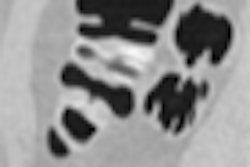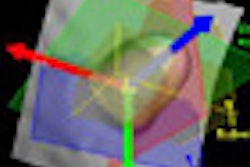Heart rate control is an important factor for success in prospectively gated coronary CT angiography (CTA). But once patients are beta-blocked, the success rate is high and the doses are uniformly low, according to a new study by Swiss researchers.
"It is crucial to control heart rate in prospective [electrocardiogram (ECG)] triggering in coronary CTA," said Dr. Dorothee Fischer at the 2010 European Congress of Radiology (ECR). Researchers from University Hospital Zurich in Switzerland aimed to assess the feasibility of 64-detector-row low-dose coronary CTA in a large, unselected patient cohort.
The study began with 612 consecutive patients (215 women, 397 men; mean age, 59 ± 12 years; range, 13-85) who were scheduled for 64-detector-row CTA at the institution for suspected (89%) or known (11%) coronary artery disease. Exclusion criteria included hypersensitivity to iodinated contrast, renal insufficiency, atrial fibrillation, or the patient's inability to follow breath-hold instructions, Fischer said.
In all, 46 (7.5%) patients were excluded due to irregular heart rhythms (n = 19), insufficient response to metoprolol (n = 21), renal insufficiency (n = 3), or inability to follow breath-hold instructions, Fischer said.
Coronary CTA was successful in the remaining 566 patients (body mass index range, 18-49 kg/m2), delivering a mean effective radiation dose of 1.8 ± 0.6 mSv (range, 0.8-4.0 mSv) with diagnostic image quality in 96.2% of segments. Intravenous metoprolol was used in 64.4% of patients. The mean heart rate was 56.9 ± 6.6 beats per minute (bpm).
"It's important to emphasize that we used a very small x-ray window at 75% of the RR cycle," Fischer said, and little "padding" of the dose was used or needed, despite the diversity of the patient cohort.
The incidence of nondiagnostic segments was inversely related to heart rate (r = -0.809, p < 0.001).
"Nondiagnostic image quality in at least one segment was found in 62 patients," Fischer said. "However, in three of those patients, at least one significant lesion was found, allowing an affirmative conclusion of coronary artery disease -- yes or no -- in 93.1% of all patients."
Below a heart rate of 62 bpm -- a cutoff determined by receiver operator characteristics (ROC) curve -- only 1.2% of coronary segments were nondiagnostic, she said.
"Low-dose coronary CTA is feasible in the vast majority of the everyday population; however, heart rate control is crucial, as a heart rate of 62 bpm or below is favorable to achieve diagnostic image quality," Fischer said.
By Eric Barnes
AuntMinnie.com staff writer
March 29, 2010
Related Reading
Coronary CTA finds plenty of plaque in runners, March 17, 2010
Stress leads to more heart attacks among police, firefighters, March 15, 2010
High pitch equals low dose in coronary CT angiography, March 4, 2010
Negative CCTA clears chest pain patients for 3 years, inexpensively, August 26, 2009
Coronary CTA beats calcium scoring for short-term prognosis, August 14, 2009
Copyright © 2010 AuntMinnie.com




















